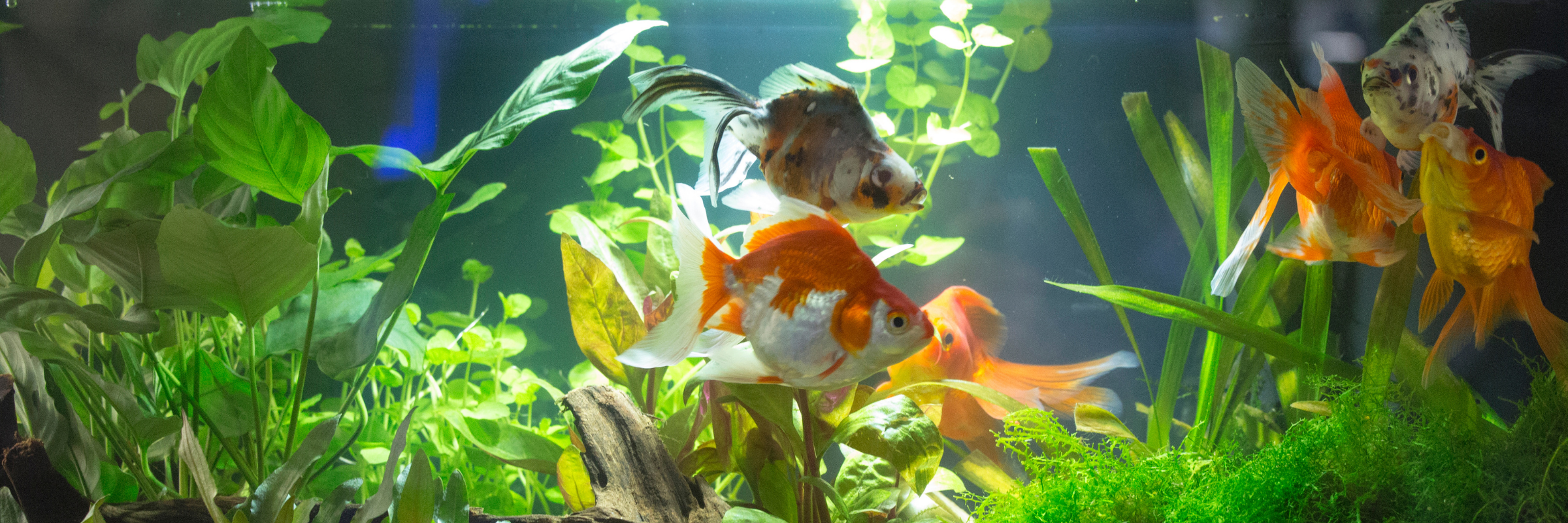A Look into The Most Common Fish Tank Diseases

Poor health in fish isn’t uncommon, but the main cause is poor water conditions. Healthy water usually means healthy fish, so paying close attention to the condition of your tank is vital.
Here’s our guide to some common diseases and infections that can affect fish and the best ways to treat them.
Cotton Mouth
This bacterial infection can affect cold-water and tropical fish. It’s sometimes confused with a fungal infection because of the appearance of white or greyish-white spots on the fish’s head. This infection starts as a pale area around the head and mouth that may turn yellow/brownish with red-tinged edges.
Bacteria generally affects the fish’s mouth, but lesions can appear on the back that looks like a saddle on the fish’s body.
Some ways to treat this condition include a 30 percent to 50 percent water change with a syphon of the tank’s gravel. Aquarium salt can be used but ensure that your fish can tolerate it. You could also use a vet-prescribed antibiotic.
In addition, you should remove the carbon from your tank’s filter during treatment. This infection is one of the reasons you need to use a quarantine tank when introducing new fish to your established aquarium.
Fin/Tail Rot
If you see that your fish’s fins or tail are frayed and the edges appear white, then they may be rotting. You may also start to see your fish frequently settling at the bottom of the tank and sometimes not eating.
This can be caused by poor water quality, but it could also start with bullying from other fish. If your fish is being bullied, you should move them to the quarantine tank.
You can treat this condition by checking the tank’s water condition and doing a 25 percent change of the water, along with a gravel siphon of the bottom of the tank.
Fungal Infections
Fungal infections are one of the most common disorders for fish. Fungal spores naturally populate fish tanks, but sick, stressed, or injured fish can cause a dangerous increase.
These infections manifest as a white cotton-wool-like growth on the skin, mouth, fins, or gills. They are normally a secondary problem, so they will need a two-part treatment.
You’ll first have to treat the underlying disease or injury via the infected fish spending time in the quarantine tank. Then go about cleaning your tank. A 30 to 50 percent water change and a syphon of the tank’s gravel are necessary. Aquarium salt can also be used, provided your fish can tolerate it and an antifungal agent will serve you well.
Be sure you always treat your tank hygienically by regularly changing your nets also. Always wash and rinse your hands before and after handling the tank’s elements.
Slime Disease
This parasitic disease is characterised by an overproduction of mucus coating, which appears as a grey-white to blue mucus coating. You’ll also see rapid breathing if your fish has this ailment, which is caused by fish feeling stressed.
Keep in mind that if the mucus covers the fish’s gills, they could suffocate.
Stress could also be increased by poor water conditions, overcrowding, or sudden temperature changes.
If you notice any of these symptoms, you should check your water for pH levels and perform a 30 to 50 percent water change.
Remove your activated carbon before adding any treatments and use aquarium salt with caution.
Preventing this disease mainly relies on you maintaining healthy water, avoiding overcrowding, and checking your fish for signs of stress.
Ulcers
Ulcers commonly affect cold-water fish, such as goldfish. The ulcers are an inflammation of the external tissues that look like sores. They can be caused by physical injury, parasites, bacterial erosion, bacterial sepsis, bacterial infection, or chemicals contained in poor water chemistry, such as high ammonia, nitrate, and high or low pH levels.
Be sure to work out if it is one fish or multiple fish that are affected, as contamination is easily spread within the tank. Seeing the symptoms should lead you to check your water conditions and perform a 30 to 50 percent water change.
Quarantine the affected fish and use different nets when doing so to avoid contamination. You can add aquarium salt – if your fish can tolerate it – but keep in mind that a visit to your local vet might be on the cards.
Velvet
Seeing spots on your fish, in finer yellow, rust, or gold dusty tones may point to a Velvet diagnosis. It can be difficult to see but using a flashlight on your fish in a darkened room will help you discover the parasite on your fish’s fins and gills.
Watch out for rapid gill movement and signs that your fish is flicking against the surfaces of the tank. Once the disease has progressed, the fish will become sluggish, lose weight, and display laboured breathing.
To rid your tank of the disease, slowly raise the water temperature to 29°C over 24 hours and turn off the lights while treating. If you have a cold-water tank, medication is important as increasing the temperature will stress them.
You should also do a 30 to 50 percent water change and add aquarium salt to the tank, provided your fish can tolerate it. Also, avoid carbon filtration during this period.
We hope that we were able to give you a better insight into the lives of our fishes and the daily battles they also have to deal with. Fishes are sensitive creatures and should be handled with the utmost care and consideration.
Our online marketplace has pretty much everything you will need to build a tank that will both house and protect your valuable fish.
Feel free to get in touch with us about all your questions, needs, and frustrations or browse our medication section for more treatment options https://mytanklife.com/product-category/equipment/medication/ 😉










